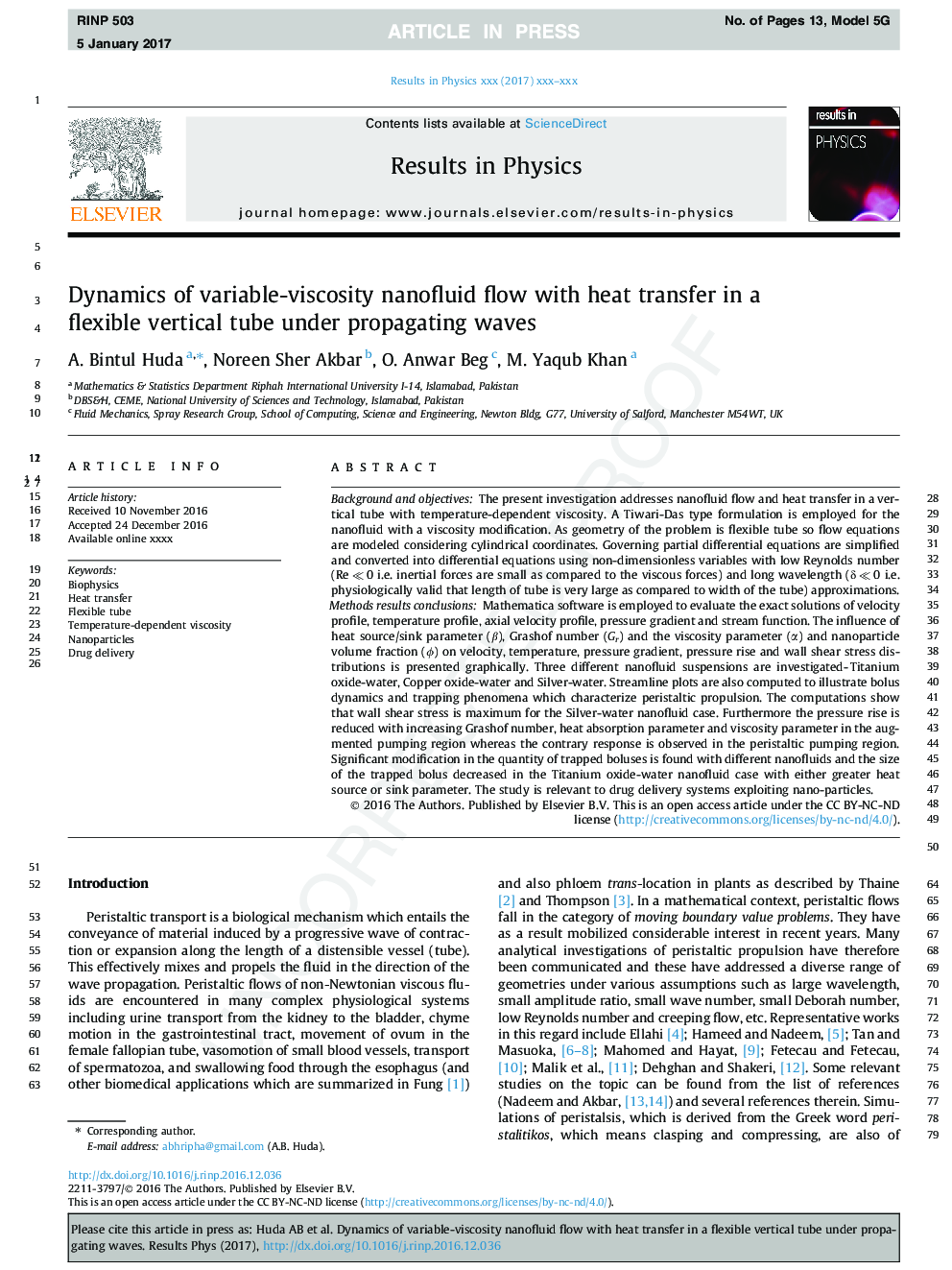| Article ID | Journal | Published Year | Pages | File Type |
|---|---|---|---|---|
| 5497561 | Results in Physics | 2017 | 13 Pages |
Abstract
Mathematica software is employed to evaluate the exact solutions of velocity profile, temperature profile, axial velocity profile, pressure gradient and stream function. The influence of heat source/sink parameter (β), Grashof number (Gr) and the viscosity parameter (α) and nanoparticle volume fraction (Ï) on velocity, temperature, pressure gradient, pressure rise and wall shear stress distributions is presented graphically. Three different nanofluid suspensions are investigated-Titanium oxide-water, Copper oxide-water and Silver-water. Streamline plots are also computed to illustrate bolus dynamics and trapping phenomena which characterize peristaltic propulsion. The computations show that wall shear stress is maximum for the Silver-water nanofluid case. Furthermore the pressure rise is reduced with increasing Grashof number, heat absorption parameter and viscosity parameter in the augmented pumping region whereas the contrary response is observed in the peristaltic pumping region. Significant modification in the quantity of trapped boluses is found with different nanofluids and the size of the trapped bolus decreased in the Titanium oxide-water nanofluid case with either greater heat source or sink parameter. The study is relevant to drug delivery systems exploiting nano-particles.
Related Topics
Physical Sciences and Engineering
Physics and Astronomy
Physics and Astronomy (General)
Authors
A. Bintul Huda, Noreen Sher Akbar, O. Anwar Beg, M. Yaqub Khan,
